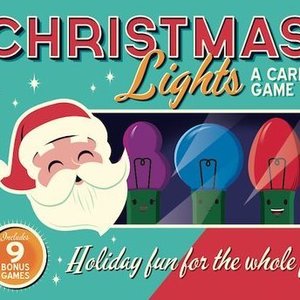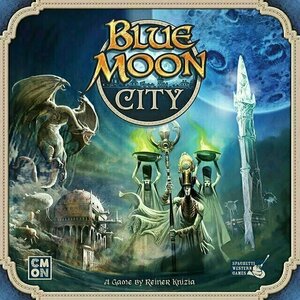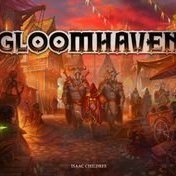
Black Skull Island
Tabletop Game
Seas of peril you’ve crossed, fighting monsters and men, to set foot on the fabled Black Skull...
PirateGames CardGames PartyGames
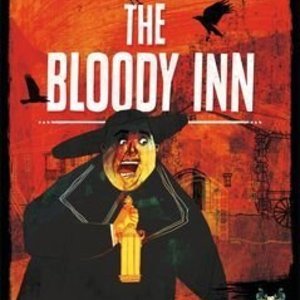
The Bloody Inn
Tabletop Game
France 1831: In a remote corner of Ardèche, the little village of Peyrebeille sees numerous...
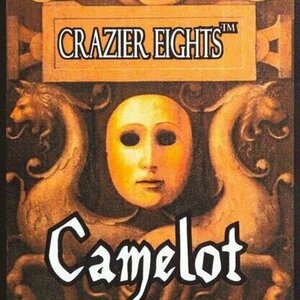
Crazier Eights: Camelot
Tabletop Game
To play Crazier Eights players start with seven cards in hand. During your turn, you draw a card,...

iMusic Cloud - Offline Music Player, Streamer
Lifestyle
App
Explore, download and listen offline music on your iPhone/iPod/iPad for free! Any music, podcasts,...
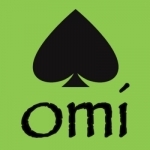
Omi Sri Lankan Card Game
Games and Entertainment
App
The ‘Omi Sri Lankan Card Game’ was designed as the famous card game Omi (which is a Sri Lankan...
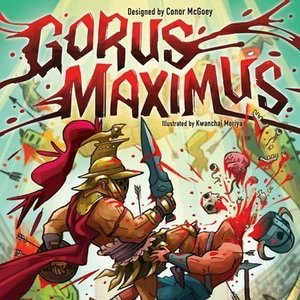
Gorus Maximus
Tabletop Game
Gorus Maximus is a bloody trick-taking game of gladiatorial combat in which the trump suit can...
2018Games Boardgames Kickstartergames Cardgames Gladiatorgames
Purple Phoenix Games (2266 KP) rated Christmas Lights in Tabletop Games
Dec 29, 2020
Christmas Lights is a card game for two to six players that has each player attempting to organize their tangle of light strands into some sort of order. However, as the lights aren’t yet on players are working in the dark. Therefore players cannot see the lights they are untangling and will need help from other players along the way.
DISCLAIMER: We were provided a copy of this game for the purposes of this review. This is a retail copy of the game, so what you see in these photos is exactly what would be received in your box. I do not intend to cover every single rule included in the rulebook, but will describe the overall game flow and major rule set so that our readers may get a sense of how the game plays. For more in depth rules, you may purchase a copy online or from your FLGS. -T
To setup a game shuffle and place out the Event, Pattern, and Bulb card decks into their piles. Deal each player five Bulb cards face-down and two Pattern cards. Each player will also be given a random Character card and player aid card. Whomever is dealt the Santa character will be the first player. The players will consult their Pattern cards and choose one to begin working on initially. The game is now ready to begin!
On a turn a player has the opportunity to take four different actions, in their specific order: Play, Swap, Sale, and Refill. To Play one or more cards, simply choose it/them from hand and place it/them down to begin or continue the strand pictured on the first Pattern card in exact sequence order. Should a player wish to Swap cards with another player, they simply take the swap card from their hand and grab whichever card they please from an opponent’s hand to be placed in their own. Next the player may offer a card from their hand to be sold to other players during the Sale phase. Should another player wish to purchase the card, they spend not money but information to the seller. This information comes in the form of answers to yes/no questions about cards in the active player’s hand. Wait, why, you ask? Because player hands in this game are played facing away from the player, exactly like are played in Hanabi. That’s right, players do not see the cards in their own hands, but rather every other player’s hand. Once some or all of these phases have been played, the active player will need to Refill their hand back up to five cards. It is now the next player’s turn.
Each of these steps will need to be taken in order. Should a player not wish to Swap, for example, they may not hold a Sale and then decide to Swap afterward.
Some Bulb cards are special. These include the Broken Bulb, the Bubble Bulb, and the Plug. A player may place a Broken Bulb anywhere in their strand sequence as a temporary placeholder, but it will need to be covered up by the correctly-colored Bulb card in the future before the player is able to score the strand. The Bubble Bulb is essentially a Wild Bulb and can be played in place of any colored Bulb. However, once played it will remind the player to draw and play an Event card immediately. These Event cards may be either good or bad for the active player, so there is risk in playing the wild Bubble Bulbs. Once the first strand is completed per the appropriate Pattern card, the player will need to play a Plug card in order to connect their first strand to their next. Then the player will be able to begin work on their second strand.
Play continues in this fashion of blind play and deduction of held cards until one player successfully completes both of their Pattern cards. Every player will be able to take the same amount of turns, and if there is a tie between players the used Broken and Bubble Bulb cards will be taken into consideration to determine the winner.
Components. This is a card game. There are a lot of cards. The cards are all great quality, and though I have seen reports of flimsy stock or even see-through quality thickness, I have not had this issue (though I believe I have the second edition of the game, so that might be a difference existing between the editions). The art on the cards is very cute and endearing. Each color of bulb is also a different shape so our colorblind friends should have an easier time playing as well. Each card is laid out well and I have no complaints about components at all.
The gameplay is such that I believe players will either love or hate. Not being able to see the cards in your hand can certainly be stressful and frustrating, but it is a very light card game. Get over it. Again, if you have played Hanabi before, you know the feeling. But it changes the game so drastically when you have to remember what’s in your hand at all times, and when players are swapping with you left and right it is definitely easy to forget what’s going on in your hand. Not that I ever had that problem… Okay, it happens all the time, but I just laugh it off.
I do love this little game and am so happy I took a chance on it. Though I am still learning to love Christmas (Halloween is my jam), this game has a ton going for it. In addition to the game I have loosely described in this review Christmas Lights comes with a booklet that has rule sets for 12 different games that can be played with the included components. TWELVE EXTRA GAME MODES. That’s crazy! So when purchasing Christmas Lights people are actually purchasing 13 games in one box, with two of those modes being for Solo players. The variety and replayability here is off the charts and I am excited to play through the other game modes as soon as I can, and I know my wife will be into as well.
That said, having a Christmas-themed game that delights my wife and I equally is certainly something that I can easily recommend. Purple Phoenix Games gives this one a cheery 10 / 12 for its portability, variability, cute art, and great game play. If you see it in stores, pick up a copy. I am going out on a limb and saying that you could even play this game when it’s NOT Christmastime and still have a great experience with it. If you are looking for something a little different and like Hanabi but wish for something else, give Christmas Lights a shot. Hopefully you will find it as charming as we both do. Oh, and a little pro tip: pour yourself a mug of chai and grab a gingerbread cookie whilst playing. Not necessary, but it certainly works for us. Happy Holidays, ALL holidays, everyone!
Purple Phoenix Games (2266 KP) rated Blue Moon City in Tabletop Games
Aug 27, 2021
Blue Moon City is a fantasy-set, hand management, set collection, city rebuilding game for two to four players. In it players are attempting to help reconstruct the war-ravaged Blue Moon City to its former glory by utilizing its citizens at crucial construction sites in order to earn crystals. It sounds weird, and it is, but read further to understand why. Oh and there are dragons that act like supervisors or teachers when they come stand by you to watch you take a test and judge you from behind the whole time.
To setup, place the Courtyard tile in the middle of the table and build the city in a 5×5 grid minus the corner tiles. Each player chooses their color and takes the mini and discs of that color. Place the dragons nearby, along with the Obelisk token, draw deck of cards, crystal chits, and dragon scale chits. Deal each player a hand of eight cards and the game may begin!
Blue Moon City is played over a series of turns, and each turn is divided into four phases: Movement, Contribution, Reset, Pass Turn. During the optional Movement phase, a player may move their pawn one to two orthagonal spaces (N/E/S/W) or use cards from their hand for their special movement powers for player pawn AND/OR dragon movement.
Next, a player may discard cards from their hand to contribute to the reconstruction of a building during this optional Contribution phase. By discarding a number of cards whose values equal or exceed the printed value on the matching-colored building tile a player will be able to place a disc upon the tile. Once the tile’s contribution spaces have been filled with discs it can be scored. To score a building tile, determine majority presence on the tile and award the Majority Bonus to that player. Any disc presence in minority will receive the Construction Bonus, including the majority winner. If a player had contributed on a tile that also was hosting a dragon mini, that player would earn a dragon scale from said dragon supervisor. Players may also make their way back to the Courtyard tile in order to donate crystals to the Obelisk. Doing so will allow the player to place one of their discs on the Obelisk itself, and the game ends when a player has placed the proper number of discs upon the Obelisk per the number of players.
When the pile of dragon scale tokens has been exhausted, players will check who currently holds the majority of scales. They will be awarded with six crystals, and any player holding three or more will receive three crystals. Turn all the dragon scales back into the supply to be earned again.
During the Reset phase a player may discard any number of cards from their hand and draw back as many cards plus two. So if a player discards zero cards from hand they would still draw two from the deck. Discarded four cards? Well redraw six.
Finally the active player will Pass Turn to the player on their left, who will complete their turn of the same four phases.
Play continues in this fashion until one player has placed the target number of discs on the Obelisk token to claim victory and dragon approval!
Components. Okay, this is a tough one because overall I love the components in the game. The dragons and player pawns are cool minis (from CMON that just makes sense). The Obelisk token is huge and I love how it looks. The art overall is really creepy, but well done, and enjoyable to behold. The player discs, though poo-pooed by other more-renowned reviewers, I find to be just fine. They are a smooth plastic in the player color and I have no problems with their quality. But speaking of colors… I agree with others that have stated the colors of some cards (or suits, if you prefer) should have been made a different color. What I mean is that the game is very greige-heavy throughout. The card suits (except the red, yellow, and blue) are a variation of the same greige that makes eyes strain to determine exactly which color they are holding. I understand that a certain aesthetic was targeted, and they certainly achieved that, but these colors do make it more difficult to play, especially for us that are starting to over-ripen with age.
Those component gripes aside, this is an incredible game. The color choices aside, I love everything about it! The movement from tile to tile, and trying to align movement with the cards in hand and keeping some back so that you can use them to move the dragon to your spot as well is just fun mental exercise. Each value 1 and 2 card has a special ability, be it movement bonuses, changing other cards’ colors, or just being straight up wild cards, and having to choose to use the cards as either the special power or for contribution values creates tons of crunchy gamer choices. Not super-crunchy. Turns won’t be mentally debated for 10 minutes, but deciding how best to use the hand of cards you hold is great.
I also very much enjoy the theme of the game, even though I was hoodwinked by the title (not really, just trying to tie it all back). I love fantasy worlds and having a unique theme is a definite plus for me. I haven’t yet thrown in the expansion tiles, but I will the next time I play. If you need a relatively quick-playing jaunt through a ravaged city, I recommend you check out Blue Moon City. Purple Phoenix Games give it a 10 / 12. It has nothing to do with beer, which would be another great theme idea – drunken dragons – but I will be holding onto this one for quite a while.
